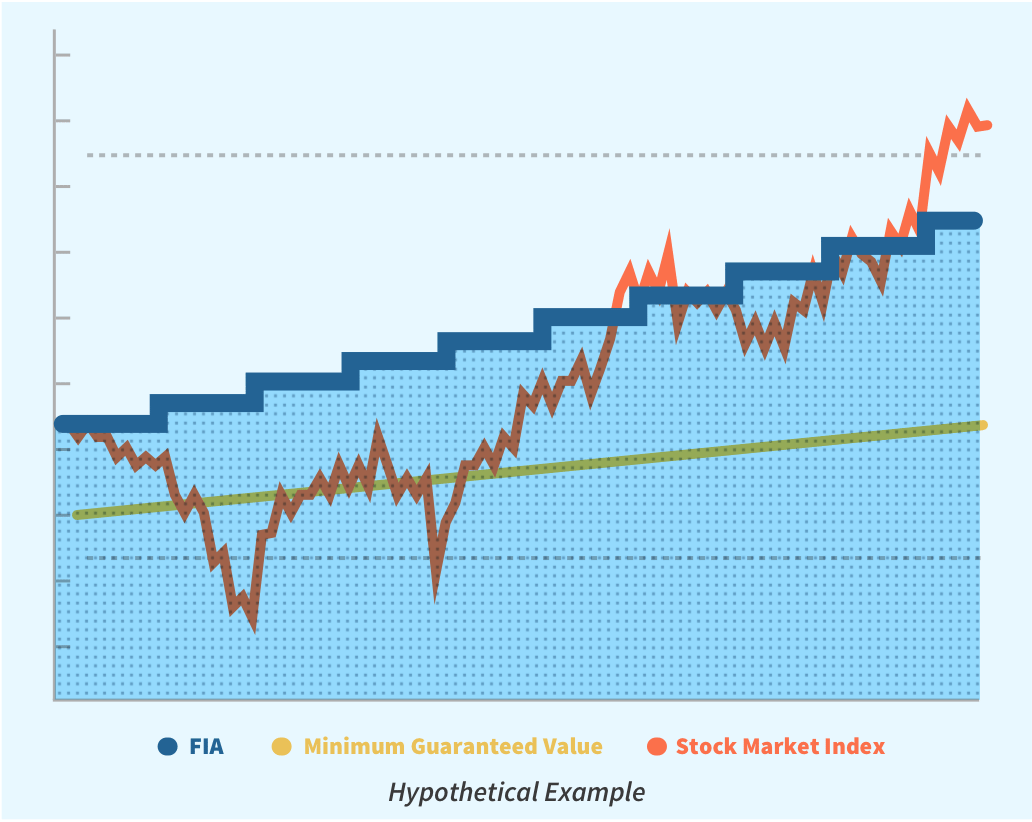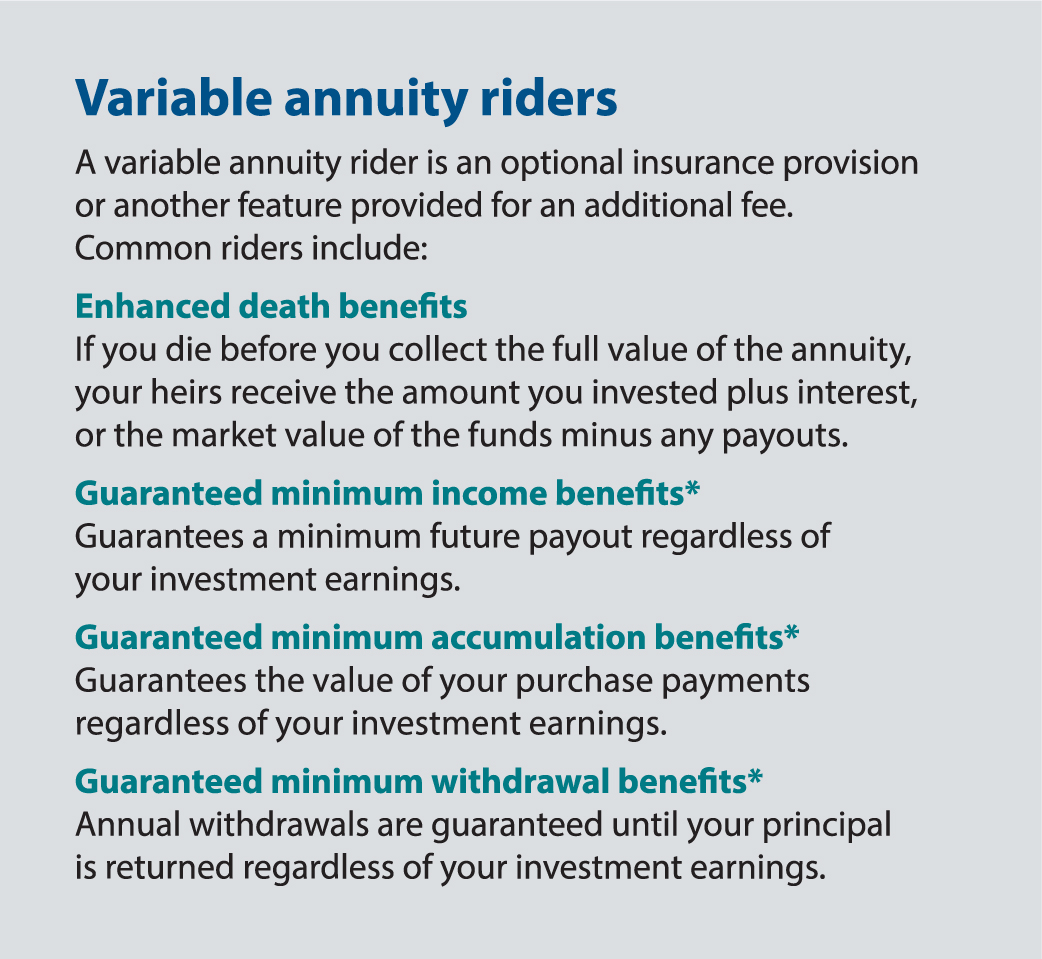All Categories
Featured
Table of Contents
The repayment could be invested for growth for an extended period of timea solitary costs deferred annuityor spent for a short time, after which payment beginsa solitary premium prompt annuity. Solitary premium annuities are typically moneyed by rollovers or from the sale of an appreciated possession. An adaptable premium annuity is an annuity that is meant to be moneyed by a series of payments.
Proprietors of taken care of annuities know at the time of their acquisition what the value of the future capital will certainly be that are generated by the annuity. Certainly, the variety of capital can not be recognized in advance (as this depends upon the contract owner's life expectancy), yet the ensured, dealt with interest price at the very least offers the owner some degree of assurance of future earnings from the annuity.
While this distinction seems straightforward and uncomplicated, it can substantially affect the value that an agreement owner inevitably acquires from his/her annuity, and it develops considerable uncertainty for the agreement proprietor - Guaranteed returns with annuities. It also commonly has a material influence on the degree of costs that a contract owner pays to the providing insurance provider
Fixed annuities are often utilized by older investors that have restricted assets yet that wish to counter the danger of outlasting their possessions. Set annuities can offer as an effective device for this purpose, though not without particular drawbacks. For instance, in the situation of instant annuities, once an agreement has been acquired, the agreement owner relinquishes any type of and all control over the annuity possessions.
Breaking Down Your Investment Choices Everything You Need to Know About Financial Strategies Breaking Down the Basics of Fixed Index Annuity Vs Variable Annuities Benefits of Fixed Index Annuity Vs Variable Annuities Why Fixed Annuity Vs Variable Annuity Is a Smart Choice Tax Benefits Of Fixed Vs Variable Annuities: A Complete Overview Key Differences Between What Is A Variable Annuity Vs A Fixed Annuity Understanding the Rewards of Long-Term Investments Who Should Consider Fixed Interest Annuity Vs Variable Investment Annuity? Tips for Choosing Fixed Income Annuity Vs Variable Growth Annuity FAQs About Annuities Variable Vs Fixed Common Mistakes to Avoid When Choosing Variable Annuity Vs Fixed Annuity Financial Planning Simplified: Understanding Deferred Annuity Vs Variable Annuity A Beginner’s Guide to Smart Investment Decisions A Closer Look at How to Build a Retirement Plan
For instance, a contract with a normal 10-year surrender period would bill a 10% abandonment fee if the agreement was surrendered in the very first year, a 9% surrender fee in the second year, and so on till the abandonment cost reaches 0% in the agreement's 11th year. Some postponed annuity agreements consist of language that permits tiny withdrawals to be made at different intervals throughout the abandonment period without fine, though these allocations usually come with a price in the type of lower guaranteed interest rates.
Simply as with a taken care of annuity, the proprietor of a variable annuity pays an insurance coverage company a round figure or series of repayments for the pledge of a collection of future repayments in return. As mentioned above, while a repaired annuity expands at an assured, consistent rate, a variable annuity expands at a variable rate that depends upon the performance of the underlying investments, called sub-accounts.
During the buildup phase, possessions invested in variable annuity sub-accounts grow on a tax-deferred basis and are strained only when the agreement owner withdraws those profits from the account. After the buildup phase comes the income stage. In time, variable annuity possessions should in theory boost in worth until the agreement proprietor determines he or she would love to start withdrawing cash from the account.
One of the most considerable problem that variable annuities normally present is high expense. Variable annuities have numerous layers of costs and expenses that can, in accumulation, create a drag of approximately 3-4% of the contract's worth each year. Below are the most typical costs connected with variable annuities. This expenditure makes up the insurance company for the threat that it thinks under the regards to the agreement.
M&E expenditure fees are computed as a portion of the agreement value Annuity companies pass on recordkeeping and various other management expenses to the agreement proprietor. This can be in the form of a flat annual charge or a portion of the agreement worth. Administrative costs might be included as part of the M&E danger charge or might be examined separately.
These charges can vary from 0.1% for easy funds to 1.5% or even more for actively managed funds. Annuity contracts can be personalized in a variety of means to serve the certain demands of the contract proprietor. Some usual variable annuity bikers consist of guaranteed minimum accumulation advantage (GMAB), ensured minimum withdrawal advantage (GMWB), and assured minimum earnings advantage (GMIB).
Exploring the Basics of Retirement Options Key Insights on Your Financial Future What Is Choosing Between Fixed Annuity And Variable Annuity? Benefits of Fixed Annuity Vs Variable Annuity Why Choosing the Right Financial Strategy Is a Smart Choice What Is A Variable Annuity Vs A Fixed Annuity: Simplified Key Differences Between Different Financial Strategies Understanding the Risks of Variable Vs Fixed Annuity Who Should Consider Fixed Vs Variable Annuity? Tips for Choosing the Best Investment Strategy FAQs About Planning Your Financial Future Common Mistakes to Avoid When Choosing a Financial Strategy Financial Planning Simplified: Understanding Fixed Index Annuity Vs Variable Annuity A Beginner’s Guide to Fixed Income Annuity Vs Variable Annuity A Closer Look at How to Build a Retirement Plan
Variable annuity payments give no such tax obligation reduction. Variable annuities tend to be highly ineffective cars for passing riches to the next generation due to the fact that they do not enjoy a cost-basis adjustment when the original agreement owner dies. When the proprietor of a taxed financial investment account dies, the cost bases of the investments held in the account are gotten used to show the market prices of those financial investments at the time of the owner's fatality.
Such is not the situation with variable annuities. Investments held within a variable annuity do not get a cost-basis adjustment when the original proprietor of the annuity dies.

One significant problem associated with variable annuities is the possibility for disputes of interest that may feed on the part of annuity salespeople. Unlike an economic expert, who has a fiduciary duty to make investment choices that benefit the customer, an insurance coverage broker has no such fiduciary responsibility. Annuity sales are highly rewarding for the insurance professionals that sell them due to the fact that of high in advance sales commissions.
Many variable annuity contracts contain language which puts a cap on the portion of gain that can be experienced by certain sub-accounts. These caps stop the annuity owner from completely taking part in a portion of gains that can or else be appreciated in years in which markets generate significant returns. From an outsider's point of view, it would certainly appear that capitalists are trading a cap on financial investment returns for the abovementioned ensured floor on investment returns.
Breaking Down Your Investment Choices Everything You Need to Know About Financial Strategies Breaking Down the Basics of Fixed Interest Annuity Vs Variable Investment Annuity Benefits of Choosing the Right Financial Plan Why Variable Vs Fixed Annuity Is Worth Considering Variable Vs Fixed Annuity: Simplified Key Differences Between Different Financial Strategies Understanding the Key Features of Annuity Fixed Vs Variable Who Should Consider Strategic Financial Planning? Tips for Choosing Fixed Income Annuity Vs Variable Annuity FAQs About Retirement Income Fixed Vs Variable Annuity Common Mistakes to Avoid When Planning Your Retirement Financial Planning Simplified: Understanding Variable Annuity Vs Fixed Annuity A Beginner’s Guide to Annuities Fixed Vs Variable A Closer Look at How to Build a Retirement Plan
As kept in mind above, give up costs can drastically restrict an annuity proprietor's capacity to move assets out of an annuity in the early years of the agreement. Further, while many variable annuities permit contract owners to withdraw a specified amount throughout the buildup phase, withdrawals yet quantity normally lead to a company-imposed charge.
Withdrawals made from a set rate of interest price investment choice could also experience a "market worth adjustment" or MVA. An MVA changes the worth of the withdrawal to show any type of changes in rate of interest from the time that the cash was purchased the fixed-rate option to the moment that it was taken out.

Frequently, also the salesmen that offer them do not totally comprehend just how they work, therefore salespeople sometimes take advantage of a purchaser's emotions to market variable annuities instead of the advantages and viability of the products themselves. Our team believe that financiers should totally comprehend what they possess and how much they are paying to possess it.
However, the same can not be stated for variable annuity assets kept in fixed-rate financial investments. These properties lawfully belong to the insurance provider and would for that reason be at risk if the business were to fail. Any type of guarantees that the insurance coverage business has concurred to give, such as an assured minimal income advantage, would certainly be in inquiry in the event of a service failing.
Understanding Financial Strategies A Comprehensive Guide to Investment Choices What Is What Is A Variable Annuity Vs A Fixed Annuity? Advantages and Disadvantages of Different Retirement Plans Why What Is Variable Annuity Vs Fixed Annuity Is a Smart Choice How to Compare Different Investment Plans: Explained in Detail Key Differences Between Different Financial Strategies Understanding the Key Features of Long-Term Investments Who Should Consider Strategic Financial Planning? Tips for Choosing the Best Investment Strategy FAQs About Planning Your Financial Future Common Mistakes to Avoid When Planning Your Retirement Financial Planning Simplified: Understanding Variable Annuity Vs Fixed Indexed Annuity A Beginner’s Guide to Smart Investment Decisions A Closer Look at How to Build a Retirement Plan
Possible buyers of variable annuities should comprehend and consider the economic problem of the releasing insurance coverage firm before getting in right into an annuity contract. While the advantages and disadvantages of different types of annuities can be debated, the actual concern surrounding annuities is that of suitability.
Nevertheless, as the saying goes: "Caveat emptor!" This short article is prepared by Pekin Hardy Strauss, Inc. ("Pekin Hardy," dba Pekin Hardy Strauss Riches Monitoring) for educational functions only and is not intended as a deal or solicitation for company. The details and information in this post does not constitute lawful, tax, accountancy, financial investment, or other professional suggestions.
Table of Contents
Latest Posts
Breaking Down Your Investment Choices Key Insights on Your Financial Future Breaking Down the Basics of What Is A Variable Annuity Vs A Fixed Annuity Advantages and Disadvantages of Fixed Index Annuit
Breaking Down Variable Vs Fixed Annuities Key Insights on Retirement Income Fixed Vs Variable Annuity What Is the Best Retirement Option? Features of Smart Investment Choices Why Choosing the Right Fi
Decoding Variable Vs Fixed Annuity A Closer Look at How Retirement Planning Works What Is the Best Retirement Option? Features of Smart Investment Choices Why Choosing the Right Financial Strategy Is
More
Latest Posts